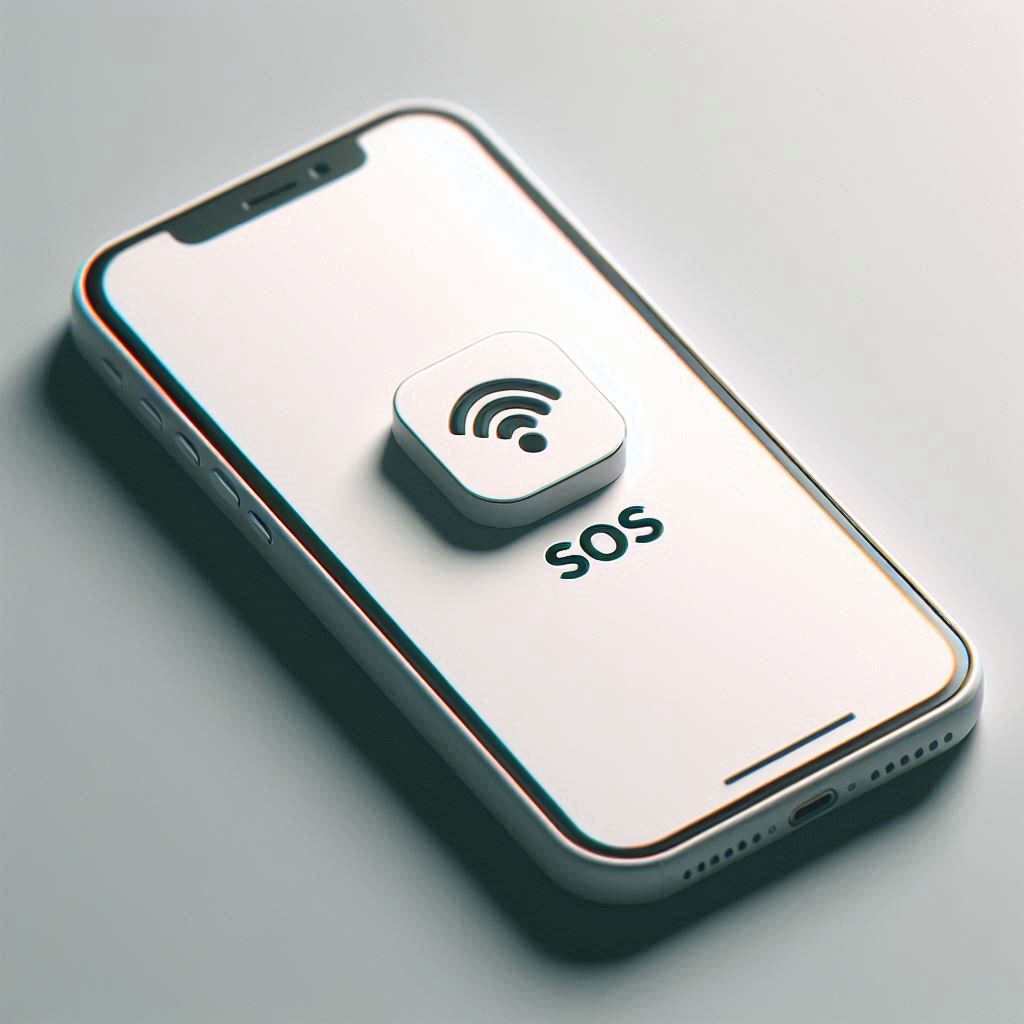When you see the SOS icon on your iPhone, it can be a bit alarming, especially if you’re not sure what it means. The SOS icon typically appears in the status bar at the top of your screen, replacing the usual signal bars or carrier name. This icon indicates that your iPhone can only make emergency calls. Here’s a deeper dive into what this means and why it happens.
What is the SOS Icon
The SOS icon on an iPhone indicates that the device is in Emergency SOS mode. This mode allows you to quickly call emergency services by pressing the side button five times or by holding the side and volume buttons together. It also sends your location to emergency contacts if configured.
Difference Between SOS and “No Service” Indicators
The “SOS” indicator means your iPhone can only make emergency calls, even though it has no cellular service.
The “No Service” indicator means the iPhone has no cellular connection at all, preventing both regular and emergency calls. This could occur in areas with no cellular coverage at all, such as remote locations or during network outages.
Common Reasons for SOS Mode

Seeing the SOS icon is scary. It means your phone can’t connect to a network. Still, you can call for help in an emergency. Let’s find out why it’s happening.
1. Poor Cellular Reception
Your iPhone might show the SOS icon when it has poor cell service. This can happen in remote areas, inside buildings, or where the network is weak. When this happens, your phone can still make emergency calls.
2. Network Outages or Carrier Issues
Sometimes, the problem is with your carrier not your iphone. Network outages, maintenance work, or technical issues on your carrier’s end can disrupt your service. During these times, your iPhone might display the SOS icon to indicate that it can only make emergency calls.
3. SIM Card Problems
Your SIM card helps your iPhone connect to the network. If it’s broken or not in right, your iPhone might not connect. This can make the SOS icon appear.
4. Incorrect Cellular Settings
Incorrect settings can stop your iPhone from connecting to the network. This can happen after updating software, switching carriers, or changing network settings.
How to Fix SOS Mode on iPhone
Encountering the SOS icon on your iPhone can be frustrating, but the good news is that there are several steps you can take to resolve the issue. Here’s a detailed guide to help you troubleshoot and fix SOS mode on your iPhone:
1. Check Cellular Connection
The first step in troubleshooting SOS mode is to check your cellular connection. Sometimes, toggling your cellular data can help re-establish a connection with your carrier’s network.
Steps:
- Go to Settings.
- Tap on Cellular or Mobile Data.
- Turn off Cellular Data and then Turn on.
Check Signal Strength: Check your iPhone’s signal strength, especially in areas you frequent. If you notice weak signals, try to avoid those spots or find ways to boost your signal, such as using a signal booster.
Avoid Dead Zones: Be mindful of areas known for poor reception, like basements or remote locations. If you must be in such areas, limit your time there to reduce the chances of your phone slipping into SOS mode.
2. Restart Your iPhone
Restarting your iPhone can often resolve minor software glitches that might be causing the SOS icon to appear. This step can refresh your device’s connection to the network.
Steps:
For iPhones with Face ID:
- Hold and Press the iPhone side button and a Volume button.
- Slide the slider to turn it off.
- Hold and Press the iphone side button again until the Apple logo appears.
For iPhones with a Home button: To turn off your iPhone, hold the power button until the slider appears. Slide it to turn off. To turn it on again, hold the power button until you see the Apple logo.
3. Update iOS and Carrier Settings
Keeping your iPhone’s software up to date is crucial for maintaining a stable connection. Updates often include fixes for bugs and improvements to network connectivity.
Steps:
- Go to Settings.
- Tap on General.
- Select Software Update if available, follow the on-screen instructions to install it.
Additionally, updating your carrier settings can help resolve network-related issues.
Steps:
- Go to Settings.
- Tap on General.
- Select About. Check updates, if an update is available, you’ll see a prompt to update your carrier settings.
4. Check SIM Card
A faulty or improperly placed SIM card can cause your iPhone to display the SOS icon. Checking and reseating the SIM card can often resolve the issue.
Steps:
- Turn off your iPhone.
- To remove the SIM card tray, use a SIM ejector or paperclip.
- Check SIM card for any visible damage.
- Reinsert the SIM card and ensure it is properly inserted.
- Turn your iPhone back on.
Tip: Look for any signs of damage or wear on your SIM card. If any issues persists, contact your carrier for a replacement
5. Optimize Cellular Settings
- Toggle Airplane Mode: If you experience connectivity issues, toggling Airplane Mode can help. Access the Control Center by swiping down from the top-right corner of your screen. Then tap the airplane icon to turn it on and off.
- Reset Network Settings: If problems persist, consider resetting your network settings. Go to Settings app > General > Reset > Reset Network Settings. This will remove any saved Wi-Fi passwords, so you may have to re-enter them.
6. Contact Your Carrier
If none of the above steps resolve the issue, it might be time to contact your carrier. There could be an issue with your account or a larger network problem that requires their assistance.
Steps:
- Call your carrier’s customer support.
- Provide them with details about the issue, including when it started and any troubleshooting steps you’ve already taken.
- Follow their instructions for further troubleshooting or account verification.
How to turn off SOS only?
To turn off “SOS Only“:
- Check Your Network Connection: Ensure you’re in an area with good cellular coverage. Change your location if needed.
- Disable Airplane Mode: Go to Settings > Airplane Mode and toggle it off.
- Restart Your iPhone: Press and hold the side button, then slide to power off. Turn on after a few seconds.
- Update Carrier Settings: Go to Settings app > General > About. If an update is available, you’ll need to install it.
- Reset Network Settings: Go to Settings app > General > Reset > Reset Network Settings. This will reset all network settings like Wi-Fi, cellular, and VPN settings.
Conclusion
SOS mode is important. It lets you call for help when you can’t connect to the internet. Learn about SOS mode. Know why this happens and how to fix it. Prevent problems. Take steps to avoid SOS mode and stay connected.
To prevent SOS mode, keep your phone updated, check your SIM card, and adjust your cellular settings. For further assistance, contact your carrier.
Stay informed about your iPhone’s settings and features. Be proactive and update your software regularly. This will reduce the chance of your iPhone going into SOS mode. Take care of your iPhone and keep it updated to ensure it works reliably.
Read More:-

